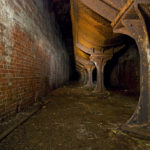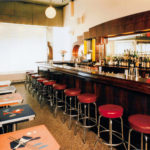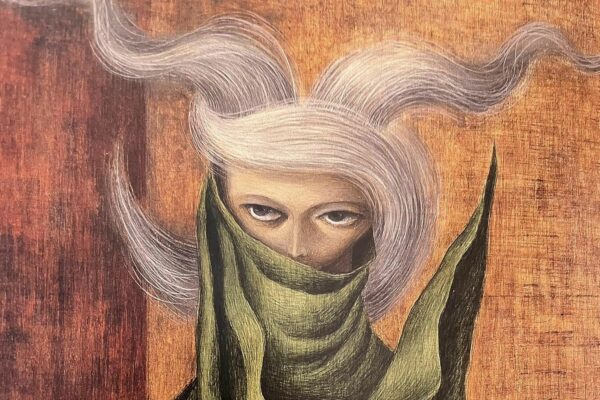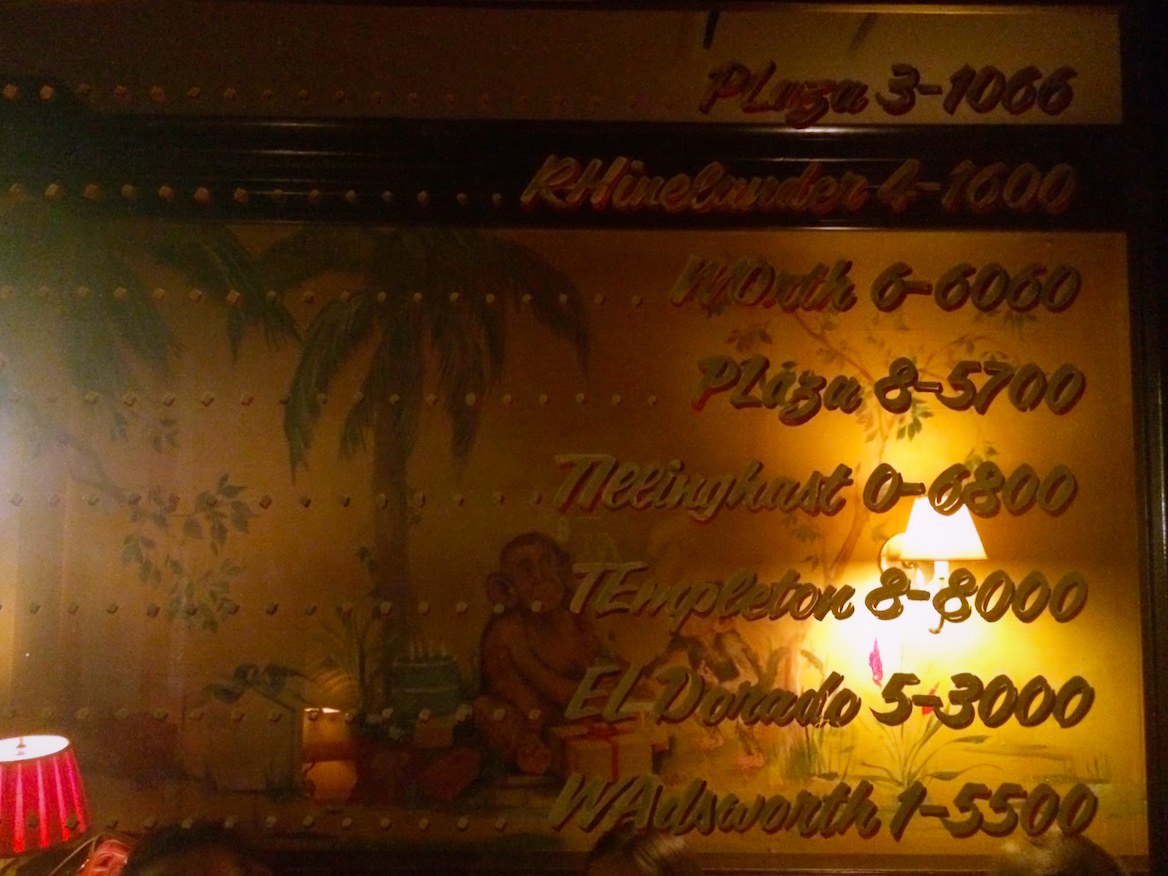
After a hard day’s toil, one of New York’s greatest pleasures is to unwind with an evening cocktail. But amidst the countless bars to be found in the city, there are some where you can enjoy your favourite drink against a beautiful back drop. For dotted around the Metropolis are bars decorated with large scale and remarkable hand painted murals. From the grand old hotels of Fifth Avenue, to the sprawling denizens of the East Village, these works of art provide a charming backdrop of refined elegance. They can be found in some of the city’s most historic bars. Often whimsical, cartoonish and playful in character, they hark back to the elegant days of old New York City, when the people dressed as well as the cocktails were made. These are some of your correspondent’s favourites…
Bemelman’s Bar at the Carlyle Hotel
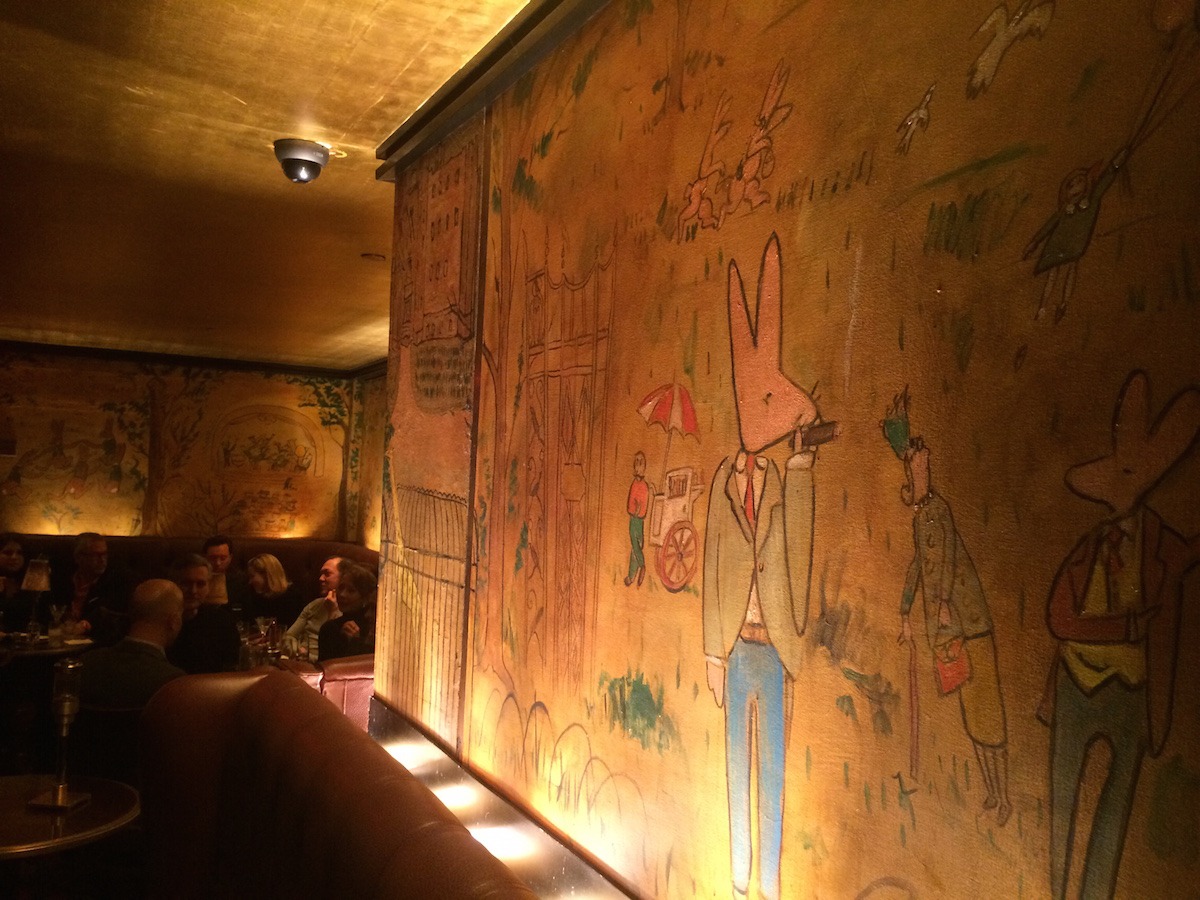
If walking into the elegant Carlyle Hotel in the Upper East seems like being in a Woody Allen film, it almost is: he plays here with his jazz band most Monday nights when not filming. But also to be found in the hotel is one of the cities most beautiful sights, Bemelman’s Bar.
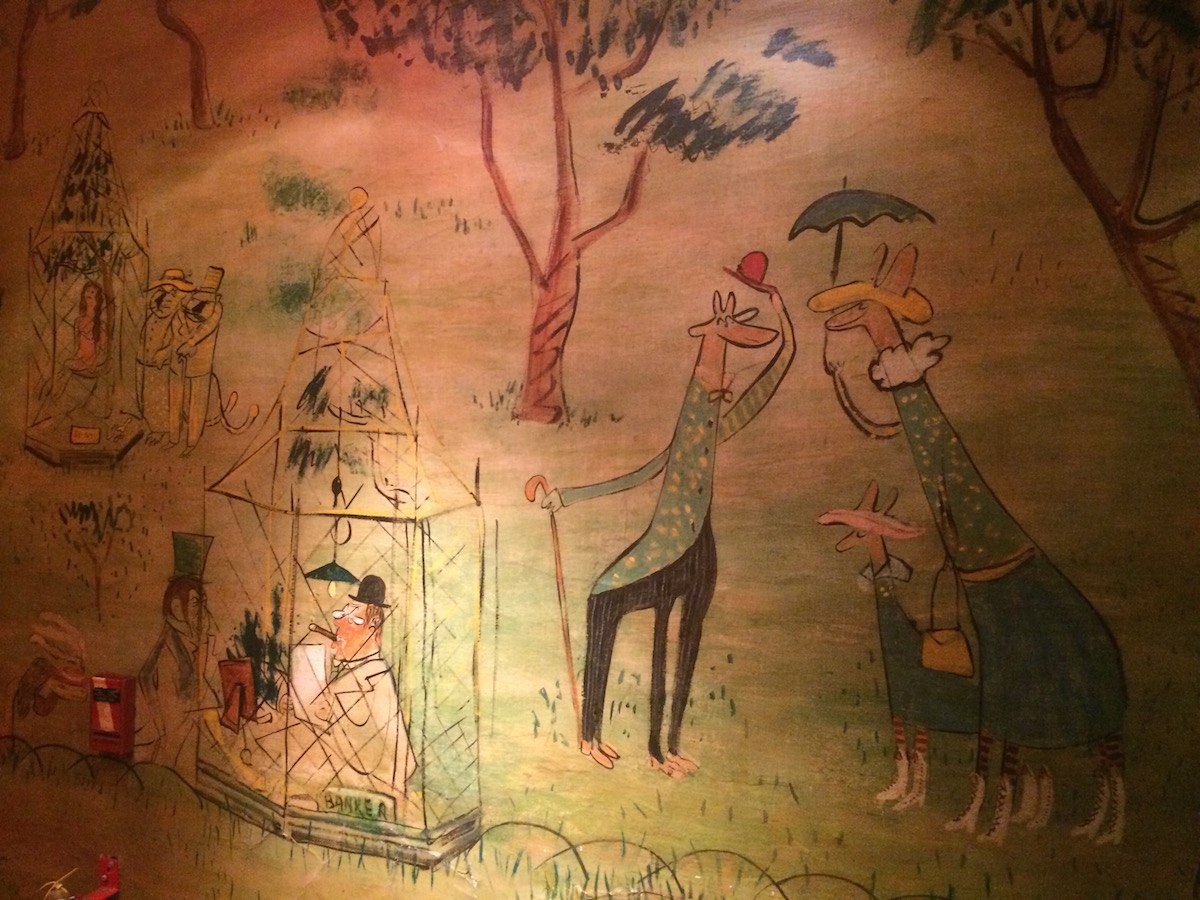
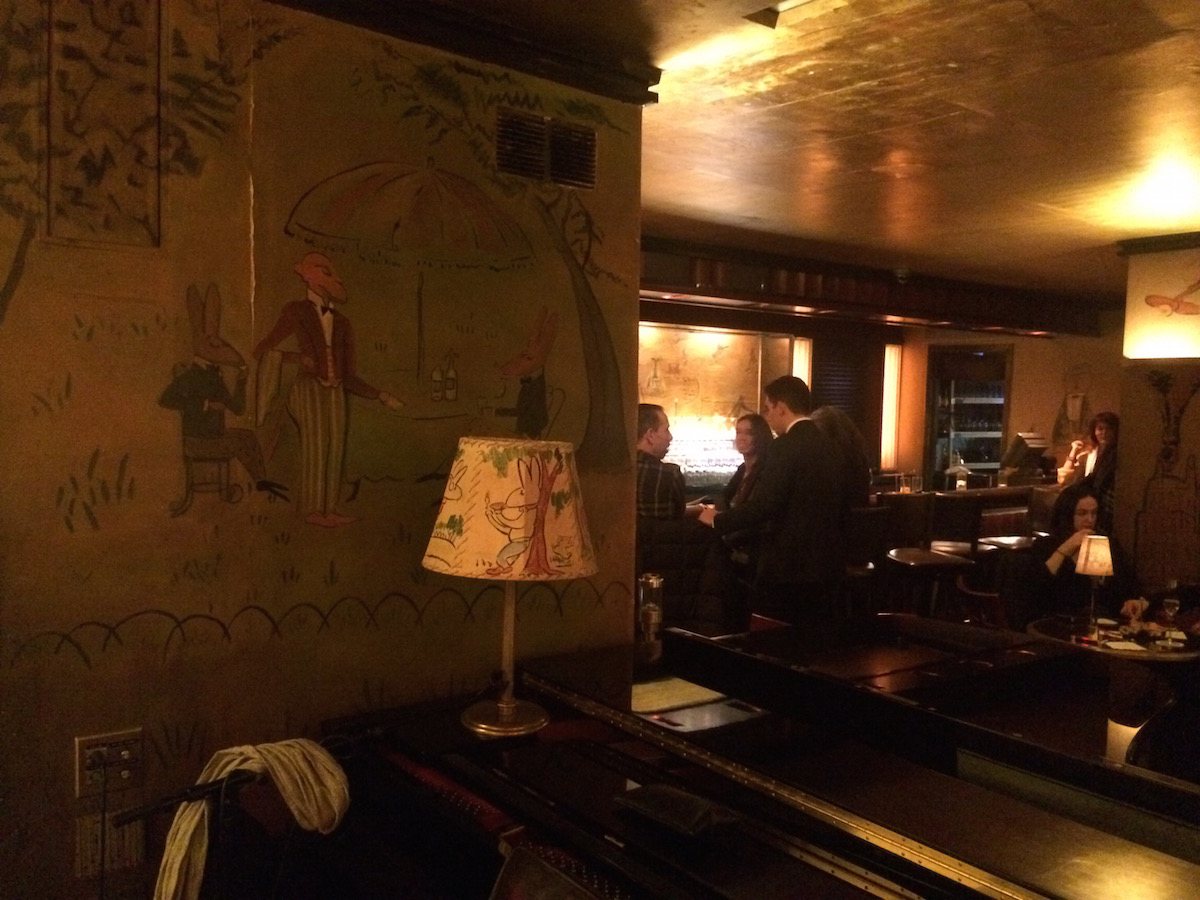
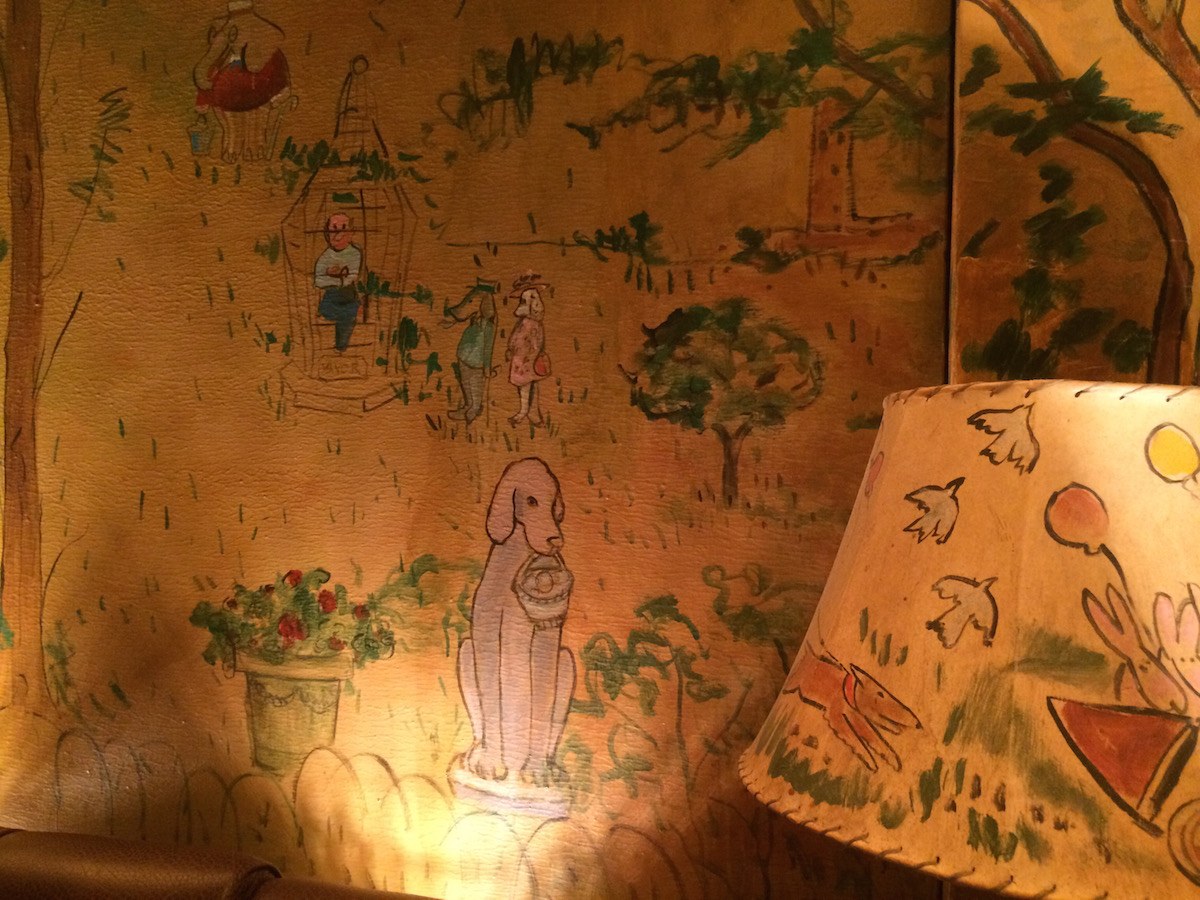
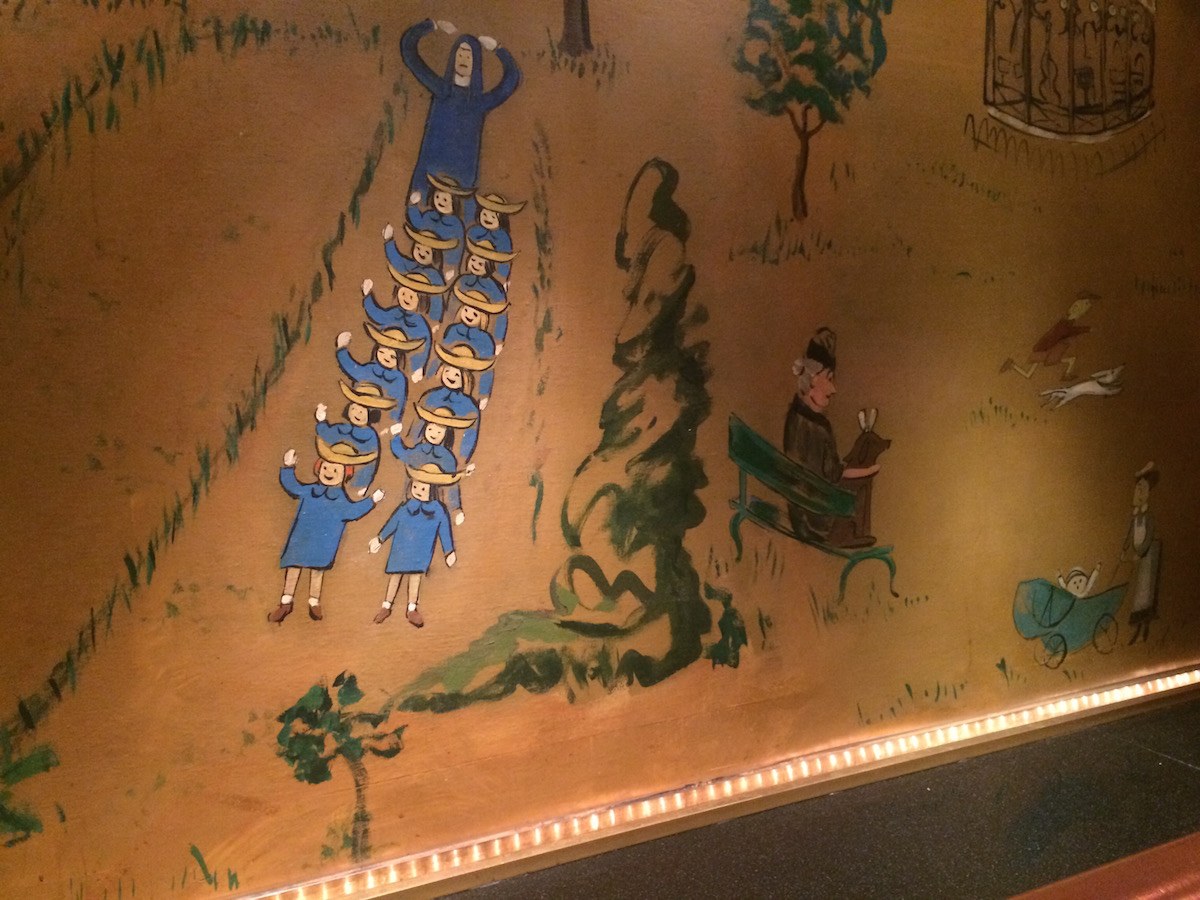
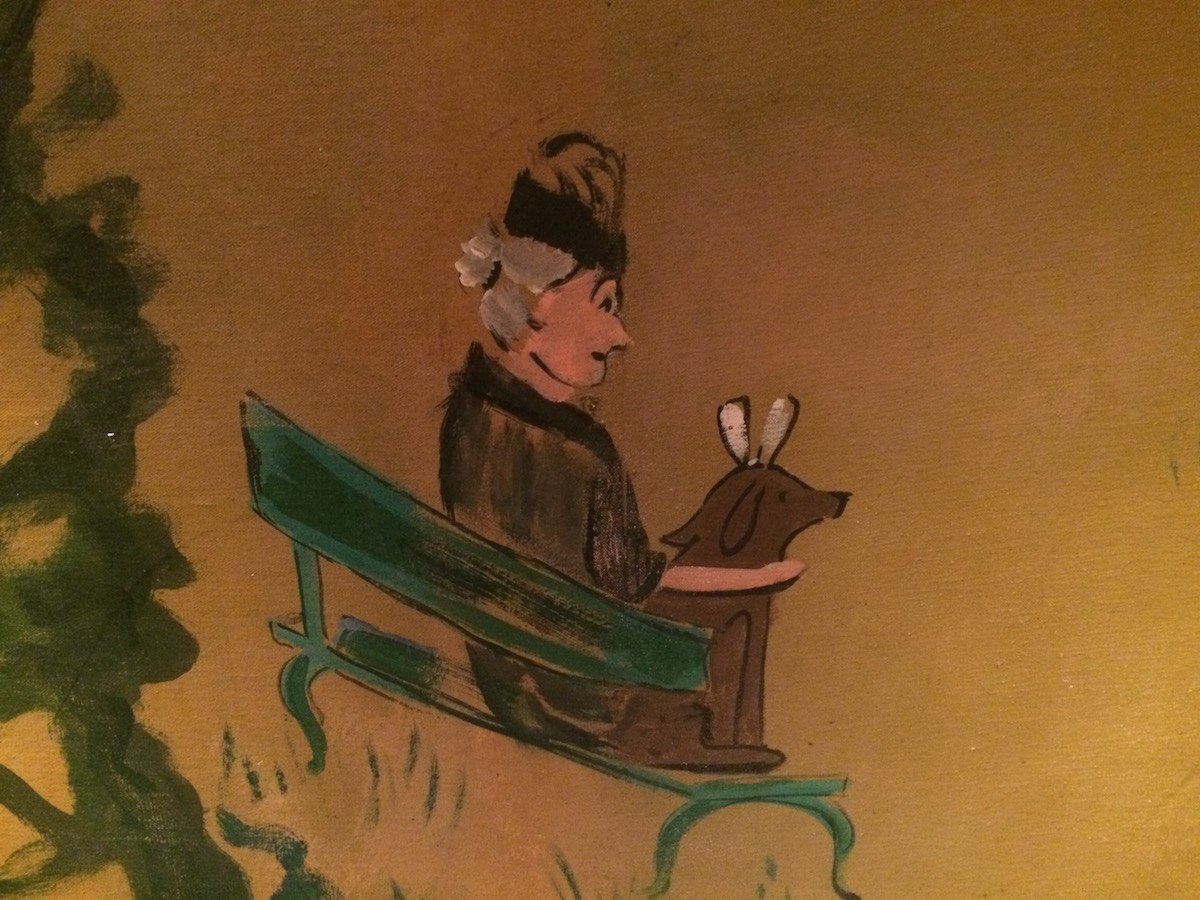
Every corner, lampshade and wall space of the bar is hand painted by Ludwig Bemelman, creator of the much loved Madeline children’s books. The only commission painted by Bemelman that’s open to the public, the mural is a whimsical back drop of Central Park filled with ice skating elephants, picnicking rabbits and courting squirrels. The mural took Bemelman just over a year to complete, and rather than being paid, he asked that his family could live in the hotel for the time it took him to paint it.
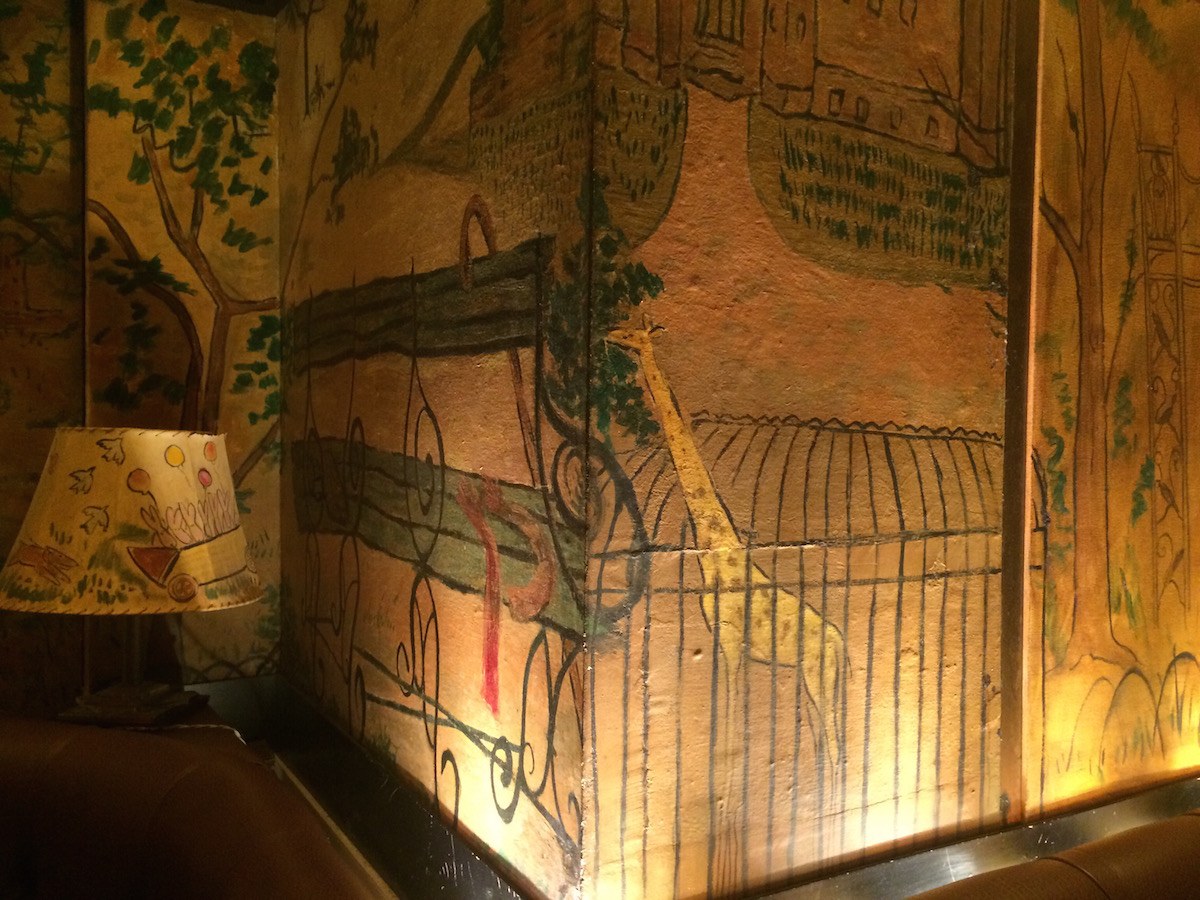
Lit beautifully, with a gold ceiling and dark wooden banquets, Bemelman’s bar also features live three piece jazz centered around a grand piano. An enduring touch of old Manhattan elegance, where ladies still step out in fur coats, and the expert bar tenders look resplendent in scarlet jackets, Bemelman’s bar is set against one of the most charming backdrops imaginable.
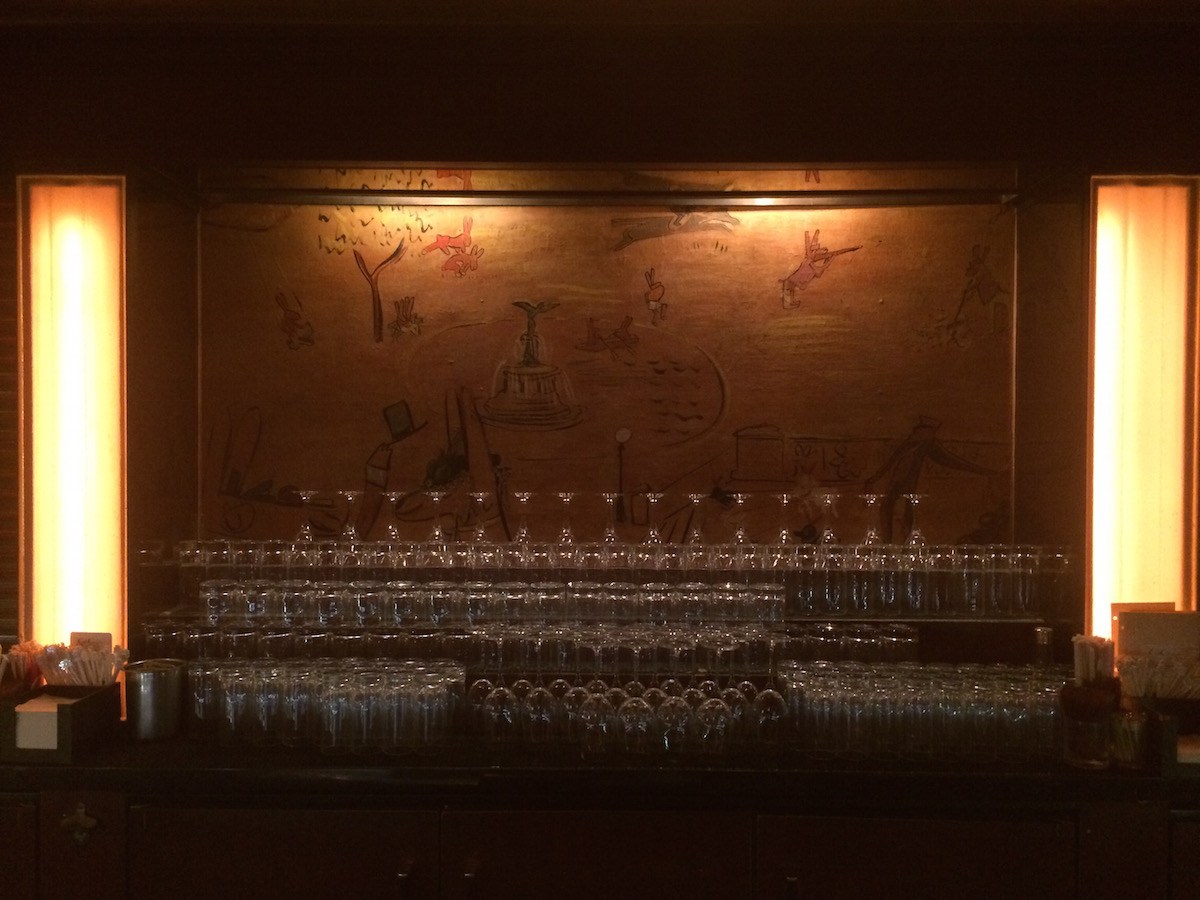
What you’re having:
One of the best made Old Fashioned’s in town.
The King Cole Bar at the St. Regis Hotel
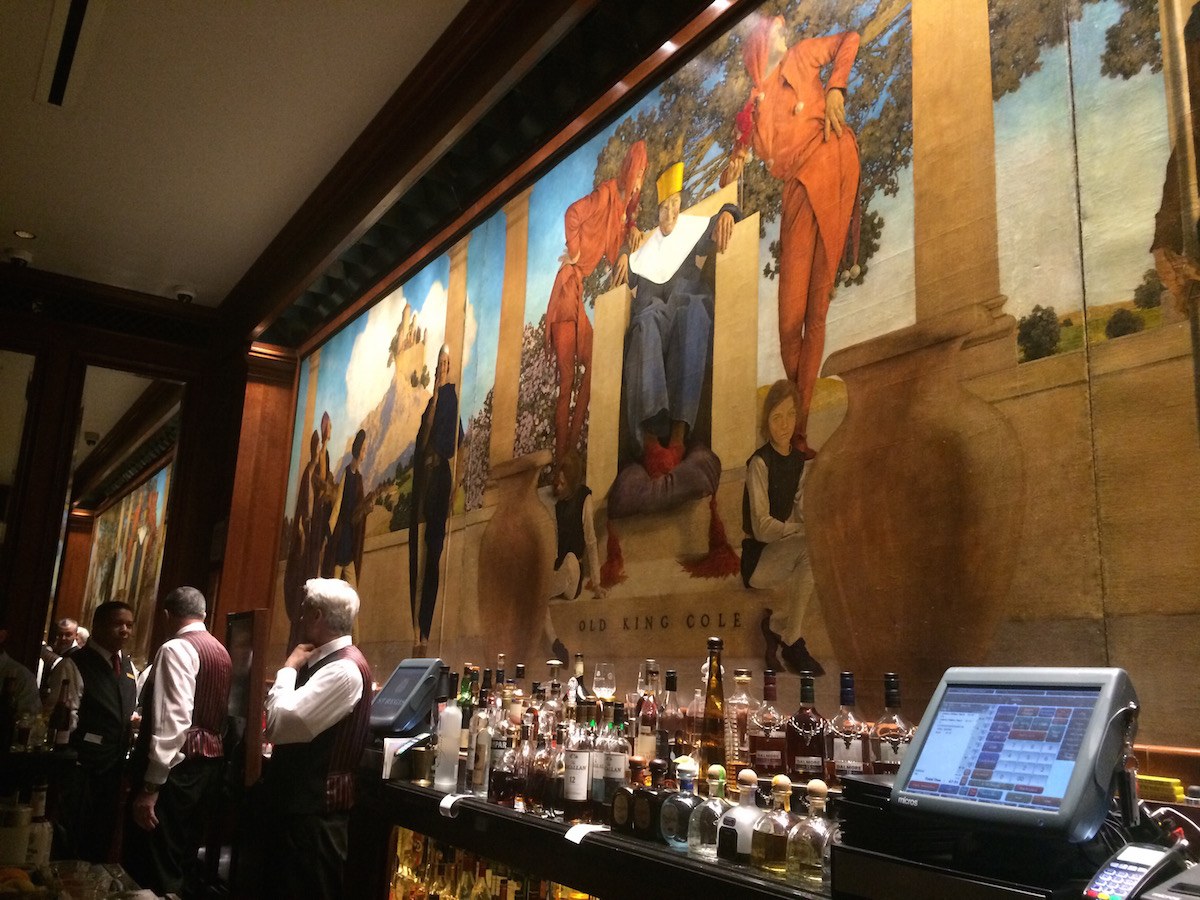
Occupying most of a city block on 55th street, between Fifth Avenue and Madison, is one of New York City’s most glittering gems. A byword for elegance and old Manhattan glamour, the St. Regis has been one of the world’s most sumptuous hotels since it opened its ornate, revolving doors in 1904. Built by one of the richest men in America, John Jacob Astor, who died on the Titanic after helping his pregnant wife into a lifeboat, the St. Regis is one of the oldest luxury hotels in the city. And it has a bar room to match; for dominating the long, dimly lit bar is a mural that would grace the Metropolitan Museum of Art. Based on the children’s nursery rhyme, Old King Cole, it was painted by one of America’s most eminent illustrators, Maxfield Parish.
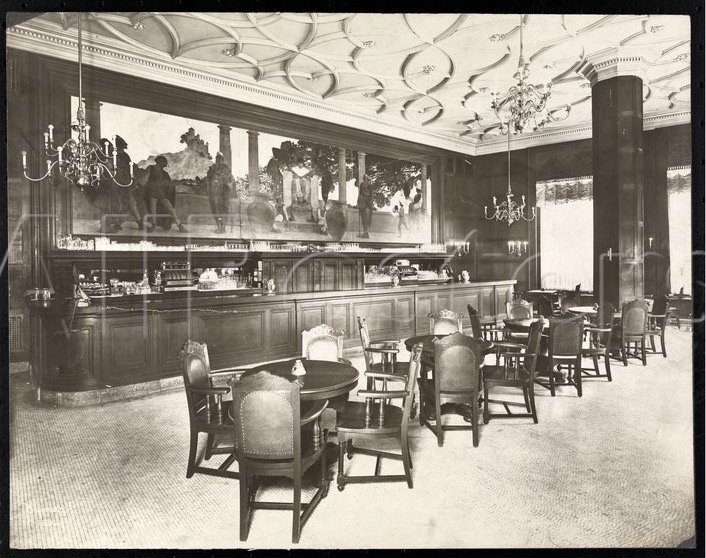
Originally it had looked over the bar room of one of Astor’s other luxury hotels, the Knickbocker, but it was moved to the St. Regis in 1932, where it has remained ever since. Legend has it that Old King Cole himself, who gazes down upon the bar cliental with a mischievous smirk, was based on John Jacob Astor himself.
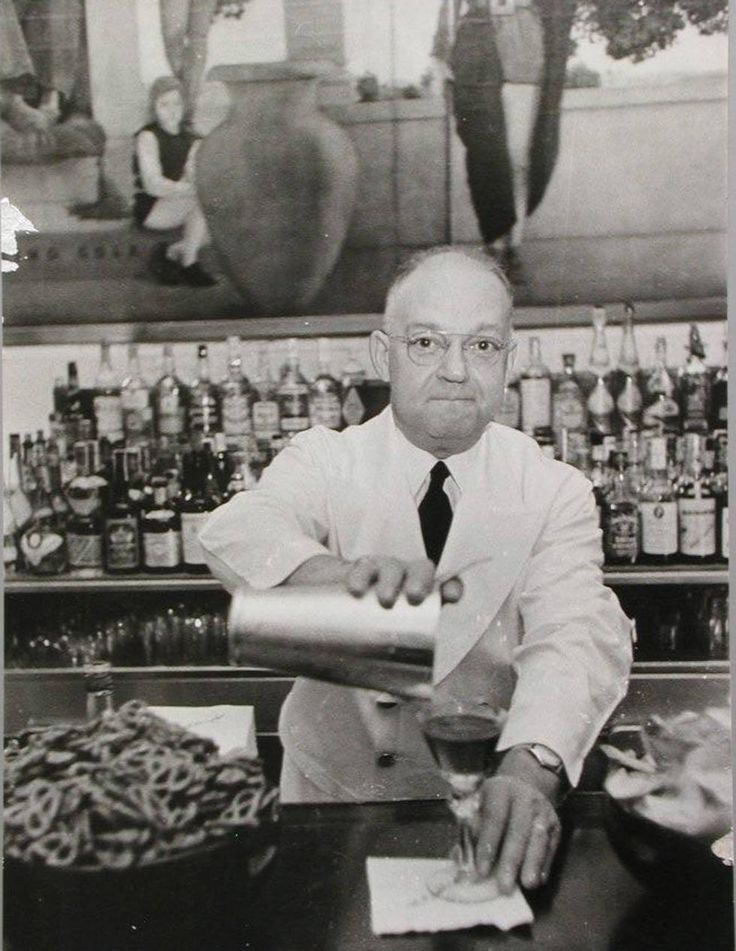
What you’re enjoying:
There’s only one way to start at the King Cole Bar, and that’s with the Bloody Mary. And with good reason, for it was said to be introduced to America here. Whilst other bars lay claim to the drink, according to the St. Regis, it was created by their bar tender Fernand Petiot, who perfected a vodka and tomato juice drink he had originally developed at Harry’s bar in Paris. The name was thought to be too racy for the sophisticates of the St. Regis, so the name was changed to the Red Snapper, which it is still called to this day.
The Monkey Bar
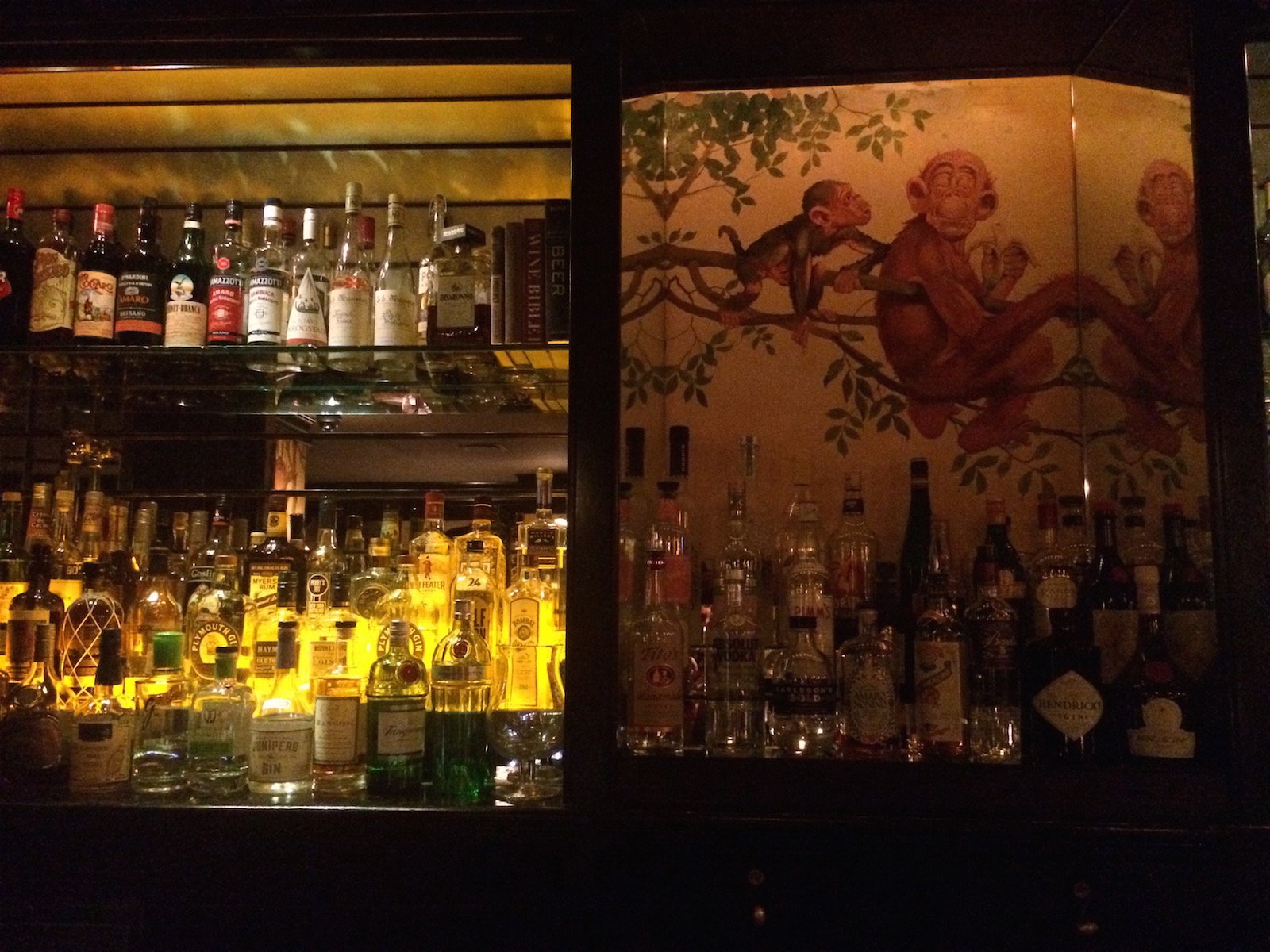
Located in the Hotel Elysée in midtown Manhattan, walking into the Monkey bar is like stepping back in time to the 1930s, when it first opened its doors.
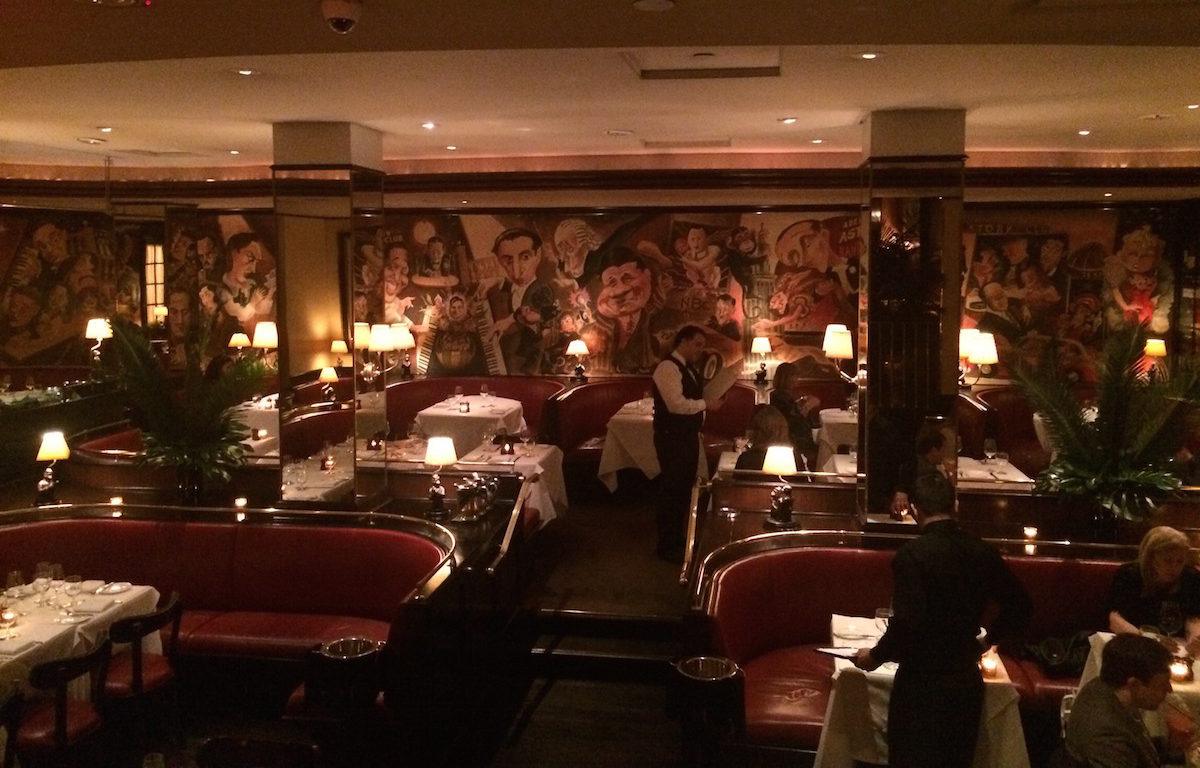
A throw back to the bygone days of old New York, one of the first things you’ll notice about the Monkey Bar is that it still has a hat check. The next thing, will be that every available wall surface is painted with monkeys.
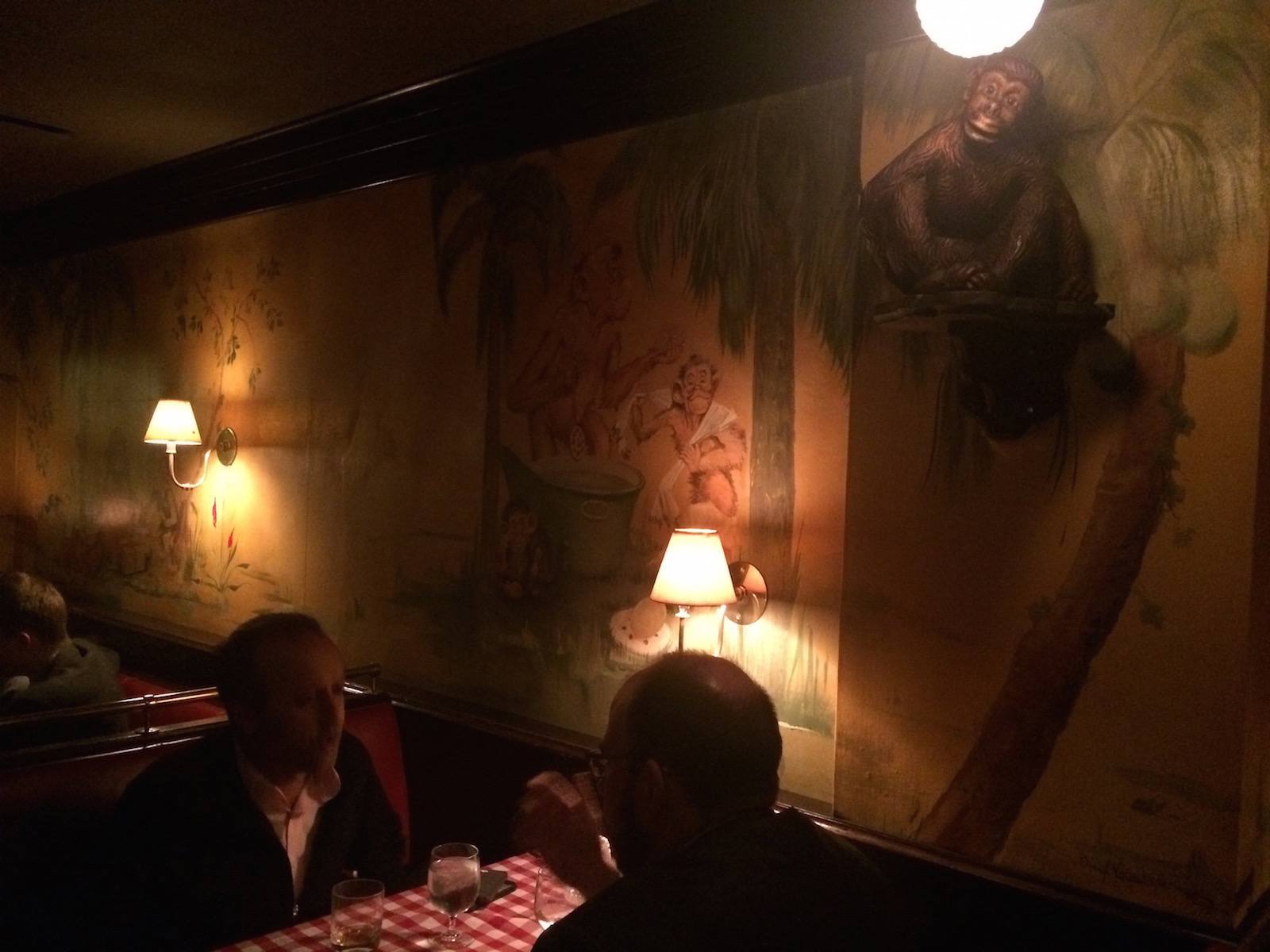
Originally painted by Charlie Wala, bar legend has it that the unusual decor was inspired by Tallulah Bankhead, who lived for a while in the hotel with a pet monkey as well as her more famous pet lion.
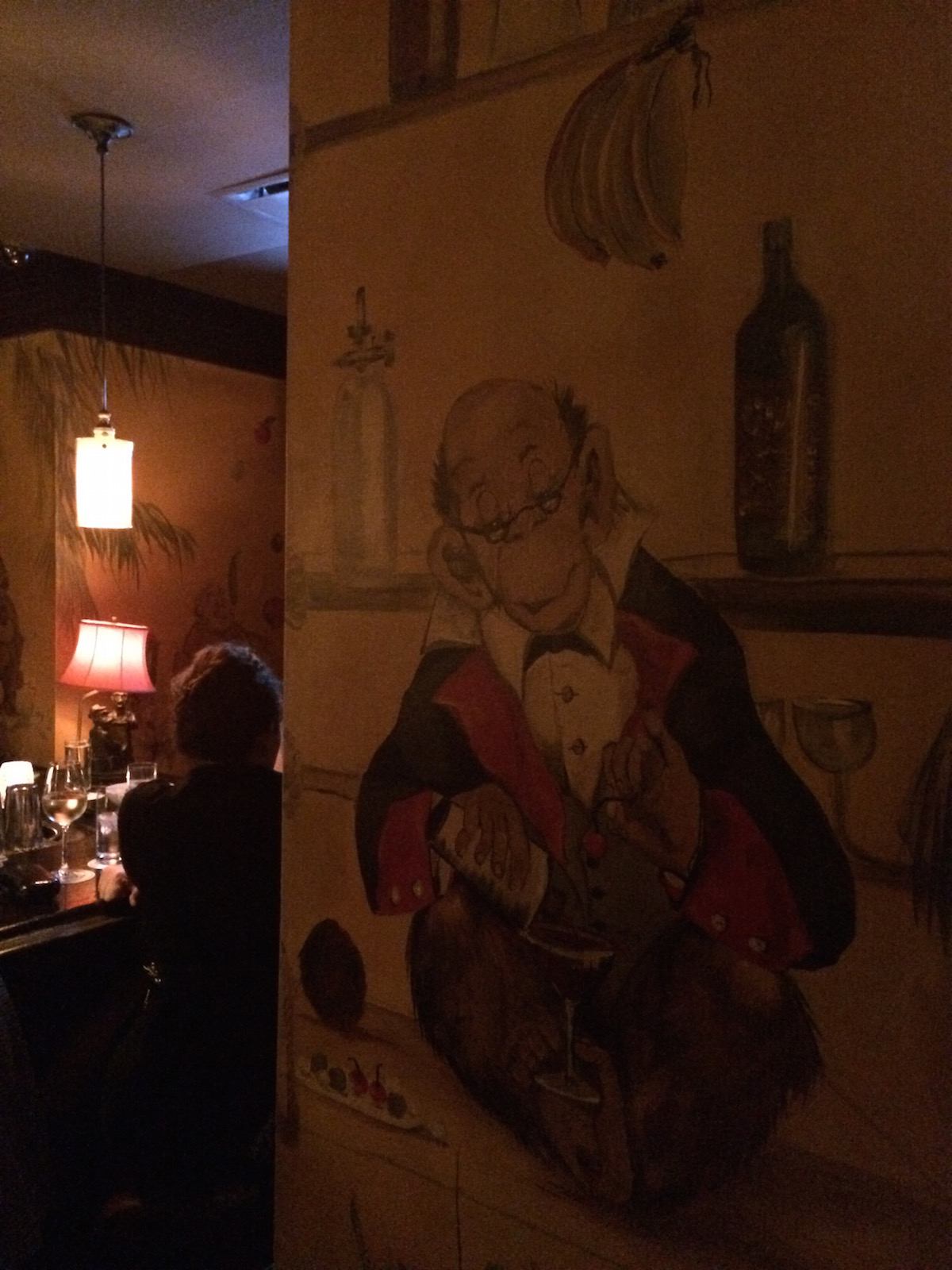
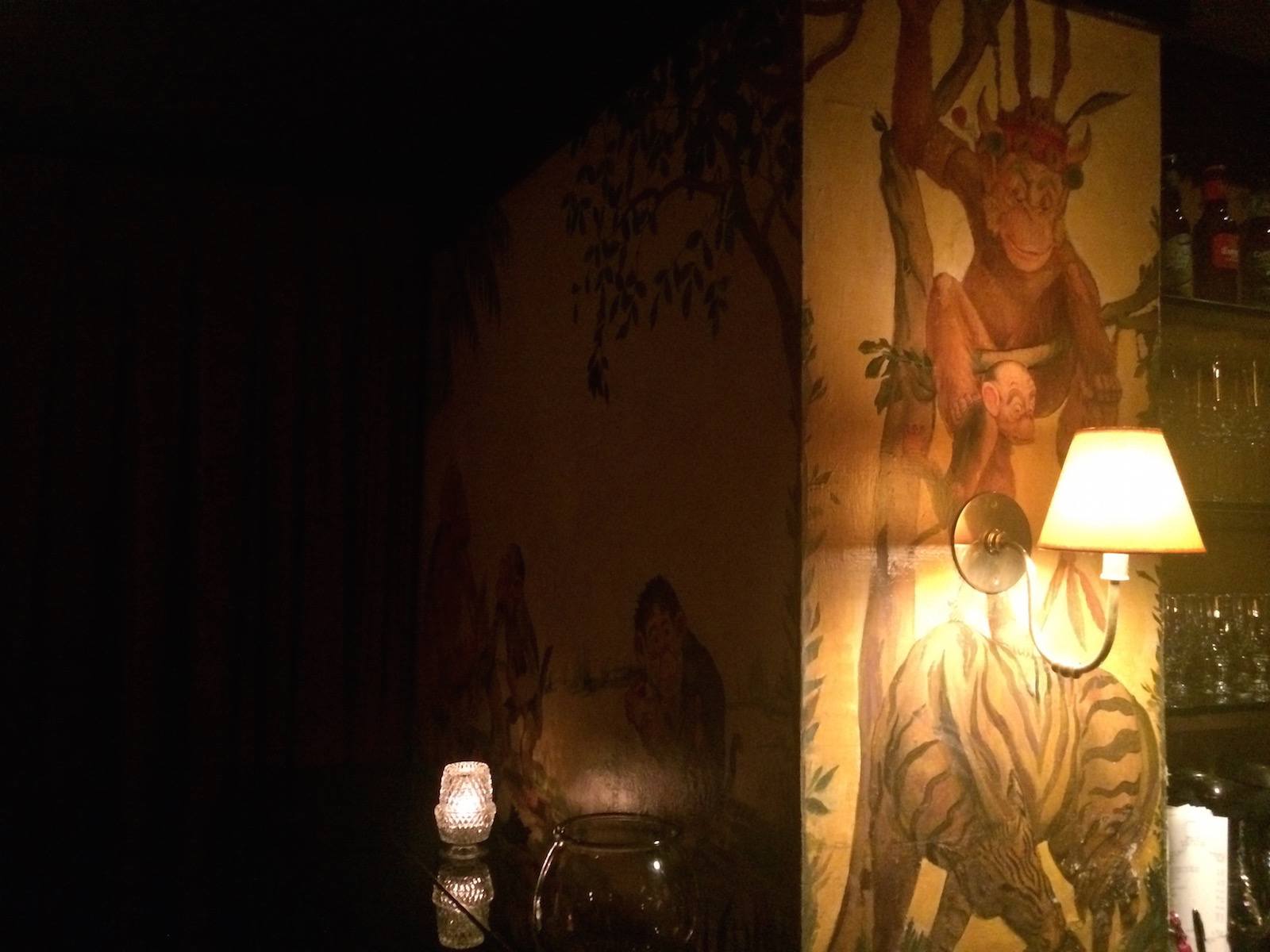
Not much has changed in the Monkey Bar since the days when Ava Gardner, Isadora Duncan and Babe Ruth used to drink here. To add to the bar’s legendary status, Tennessee Williams actually died in the hotel upstairs.
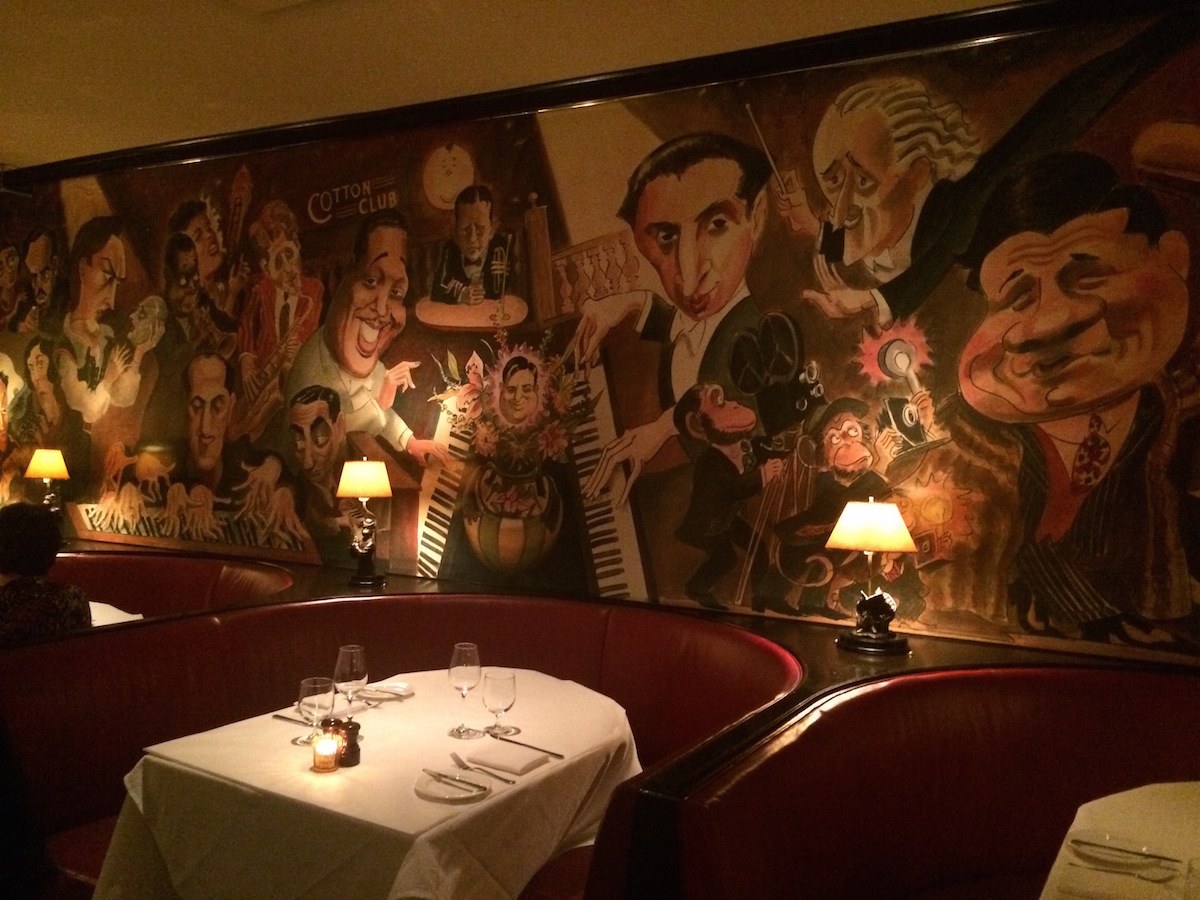
More clubroom than bar room, the Monkey Bar also leads onto a sumptuous Art Deco dining room decorated with an astonishingly vast wrap around mural painted by New Yorker artist Ed Sorel. The mural features over sixty legendary figures of the Jazz Age, many of who were once found in the whimsical Monkey Bar.
What you’re enjoying;
I’d skip their house cocktail ‘The Monkey Gland’, and head instead for a simple scotch and soda; that’s what Holden Caulfield is thought to have sipped here in The Catcher in the Rye, although J.D. Salinger switched the name of this historic bar to the Wicker Bar.
The Burp Castle
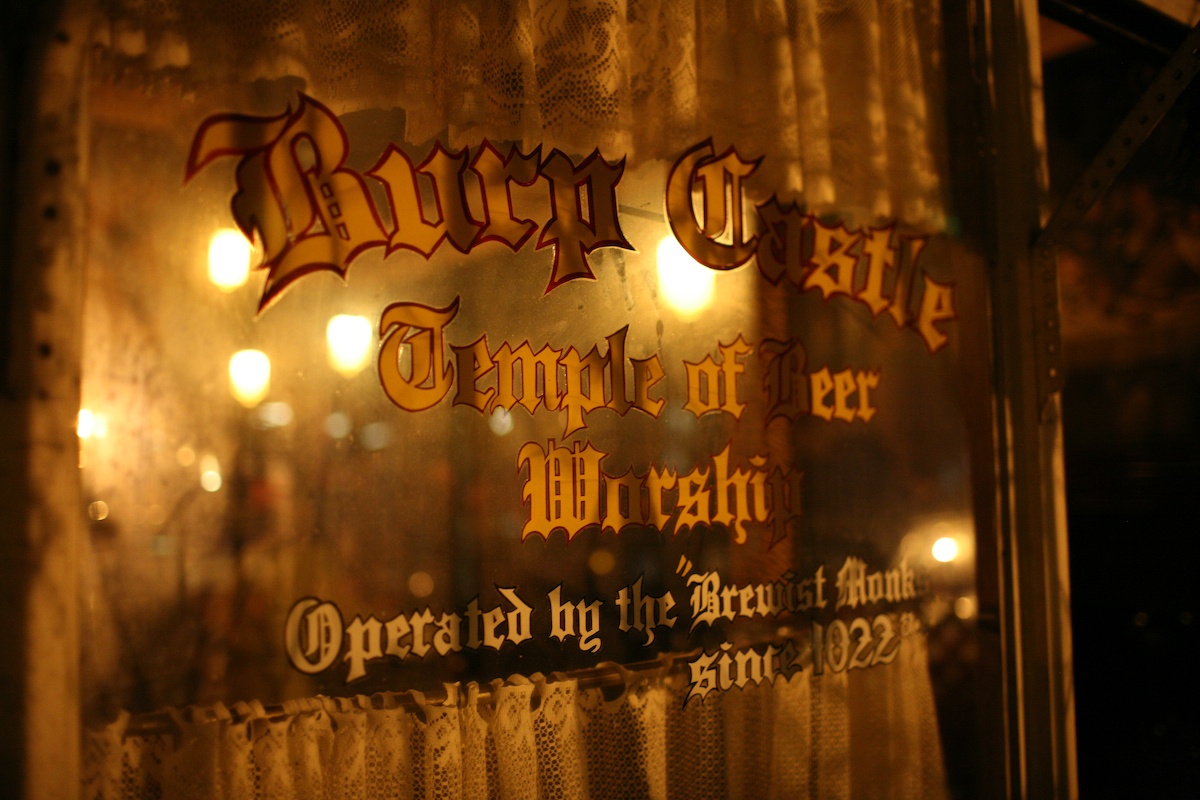
Our next port of call finds us leaving the well heeled bar rooms of midtown Manhattan and descending into the rougher charms of the East Village. For here on East 7th Street, amidst the old tenements and dive bars is something quite peculiar, a bar that is more redolent of a monastery. The secluded and quiet Burp Castle specializes in the sumptuous delights of Belgian Trappist beer. The music is often Gregorian chanting, and at one point, the bar tenders actually wore monks’ habits. In keeping with the monastic motif, if the conversation levels get too high, you’ll be shushed by the bar tender and locals alike. This library like, monastic atmosphere is heightened by a remarkable mural that fills the whole candle lit bar.
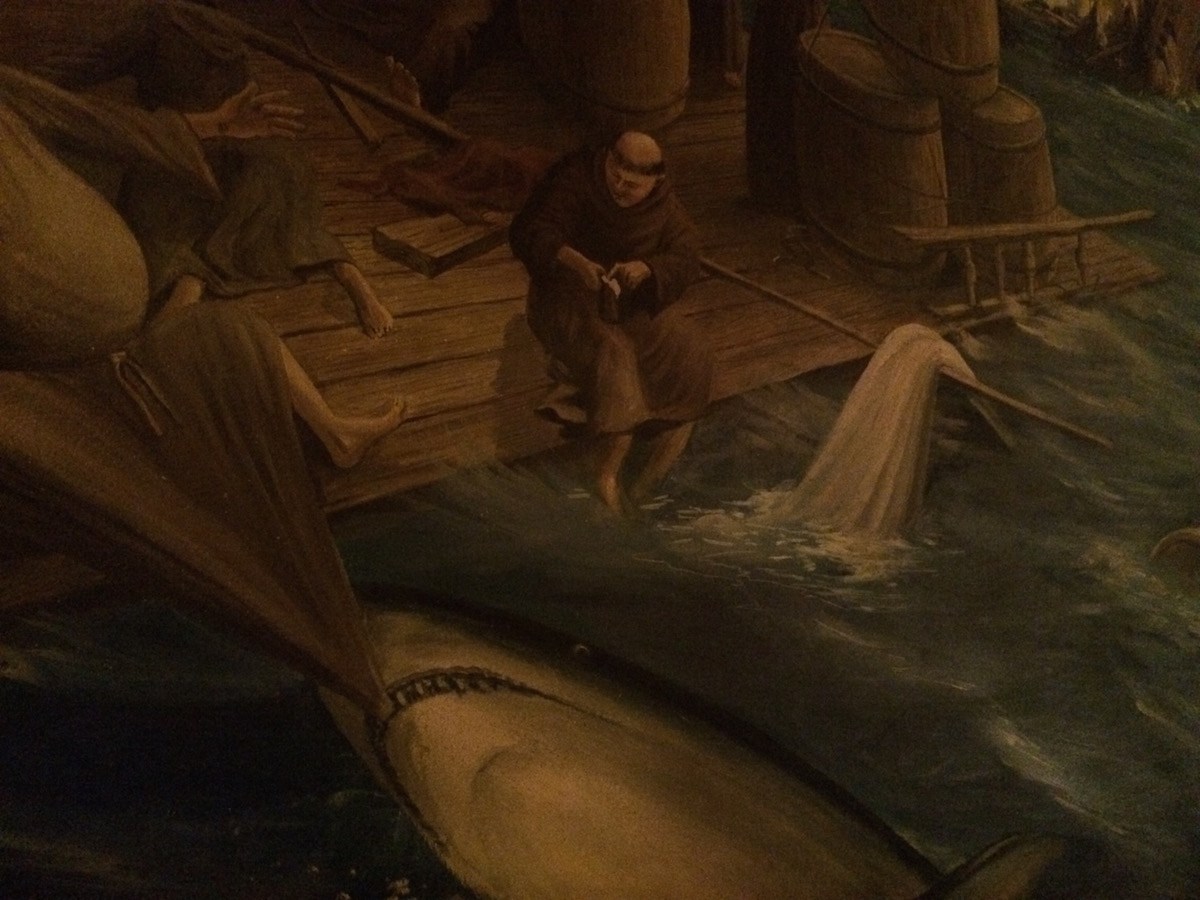
Starting in the left hand corner by the window, this Bayeux Tapestry of the Bar Room, tells the story of a fleet of tall ships floundering in a storm, their cargo of beer barrels cast into the sea, whilst their crew of monks cling to them. The mural continues behind the bar to show the beer barrels being washed up on shore, and eventually finding their way to a beer hall, where monks, scantily clad ladies and other patrons make merry with the casks of beer. Local legend has it that one particular sozzled looking beer drinker, hiding in a barrel is the original owner of the bar.
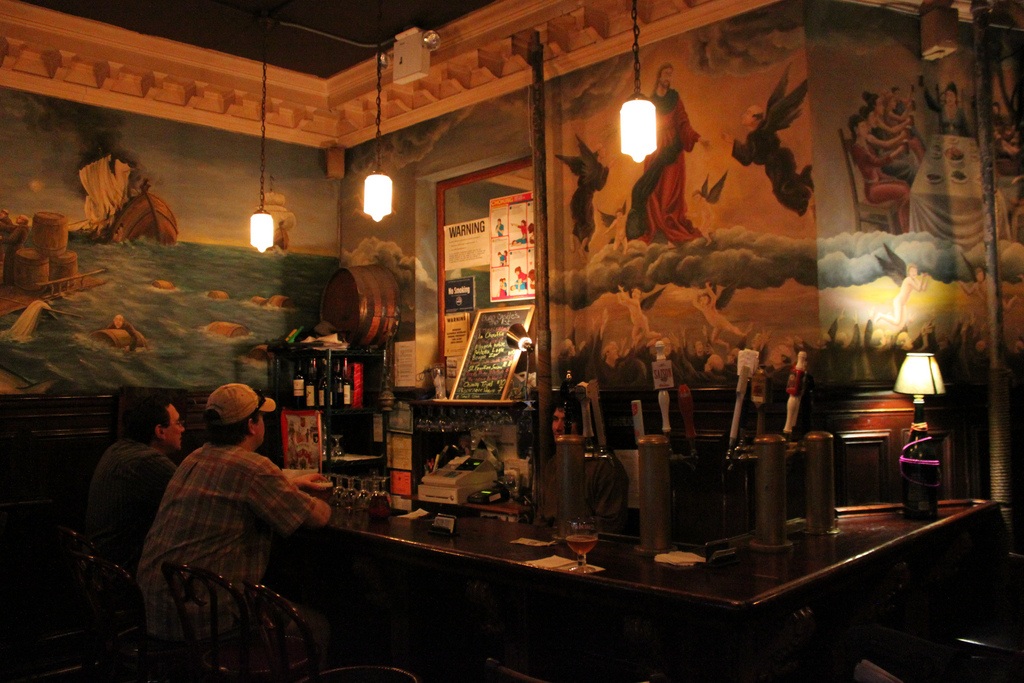
What You’re Enjoying;
One of the cities finest rotating selections of Trappist ales, I recommend the Triple Karmeliet.
Delmonico’s
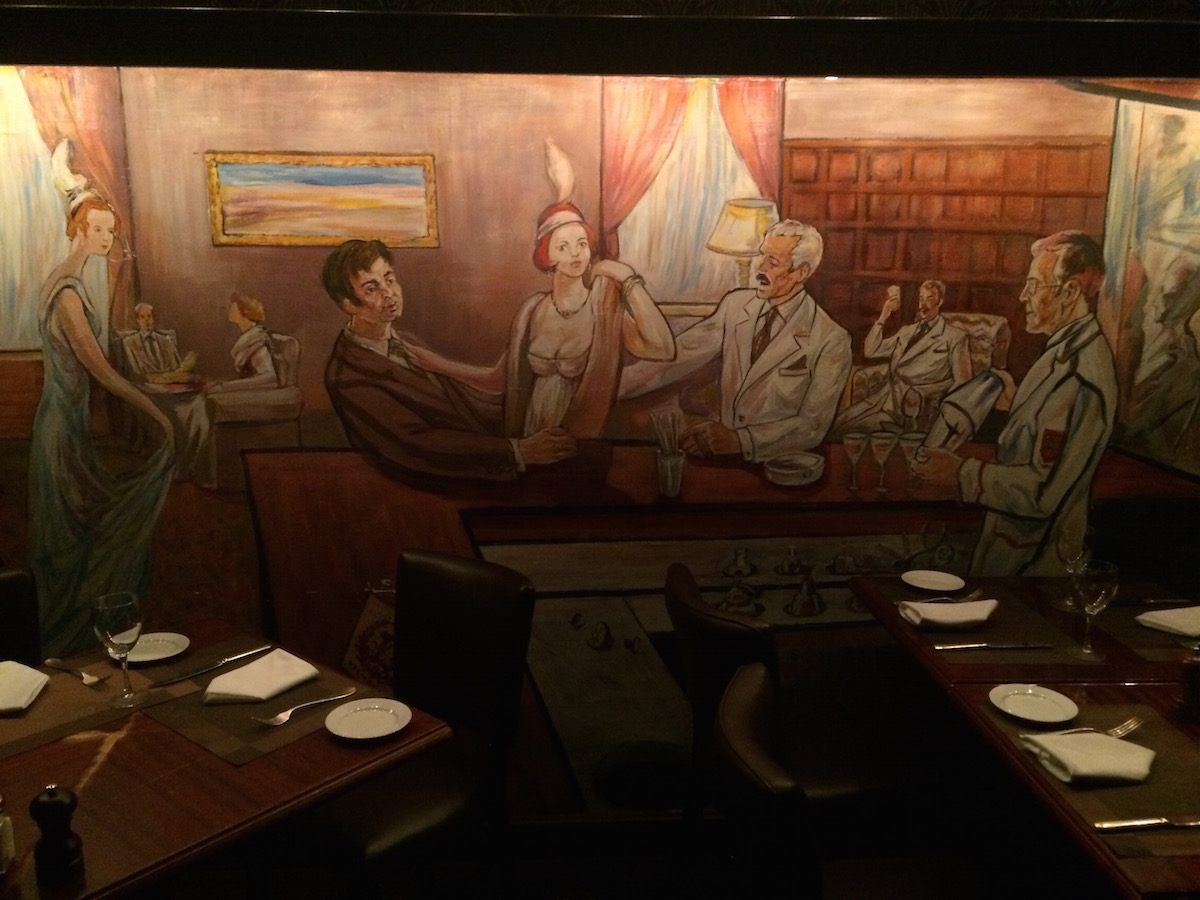
Hidden away in the maze of winding streets that make up Lower Manhattan is one of the cities oldest and most historic restaurants, Delmonico’s. Harkening back to the Gilded Age of New York, Delmonico’s started as a humble pastry shop, but grew in splendor and reputation to become the first fine dining restaurant in the country. Prior to Delmonico’s, public eating was mostly confined to taverns, inns and whatever set menu was on offer that day. Delmonico’s introduced the idea of ordering from a menu a la carte, and where you could enjoy a wine list. It is where Eggs Benedict, Lobster Newburg and the Basked Alaska were said to be invented, all served by waiters wearing white gloves. The restaurant was held in such esteem it was given the formidable nickname of the Citadel.
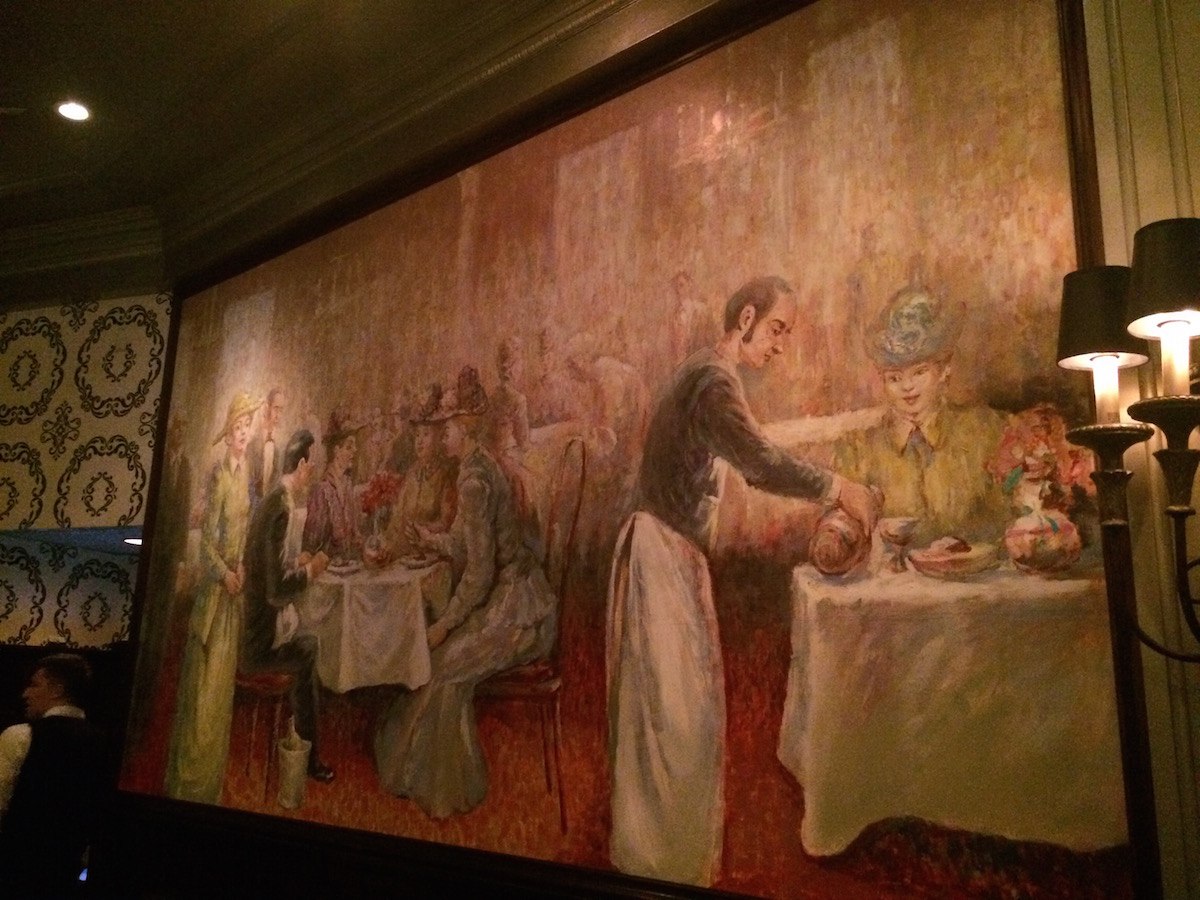
At the height of its popularity, the Delmonico family was running four restaurants through out the city, but the original on South William Street first opened its doors in 1837. Though no longer in the families hands, and at one point out of business altogether, Delmonico’s reopened in its original site in 1999.
The opulence of Delmonico’s starts on the outside, where you enter its legendary doors past pillars said to have come from Pompeii. The elegance continues in the form of murals in all the dining rooms evoking the gilded era when Delmonico’s entertained such luminaries as Mark Twain, Napoleon III, Theodore Roosevelt and Charles Dickens. Still today it is possible to enjoy the dishes that one of the grandest restaurants New York has ever seen introduced to the world.
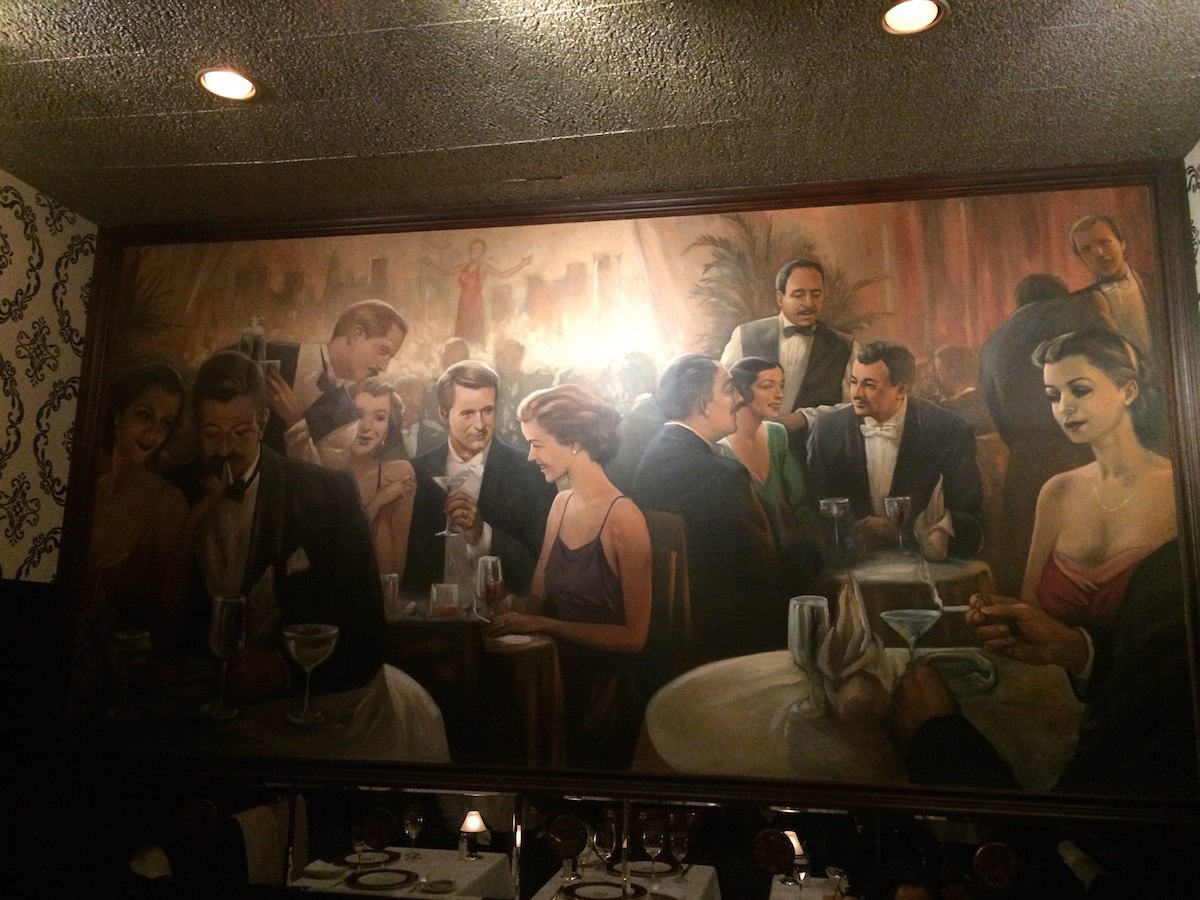
What you’re having;
The original Delmonico’s introduced the concept of a wine list to the United States; today it is the roughly the size of a dictionary.


